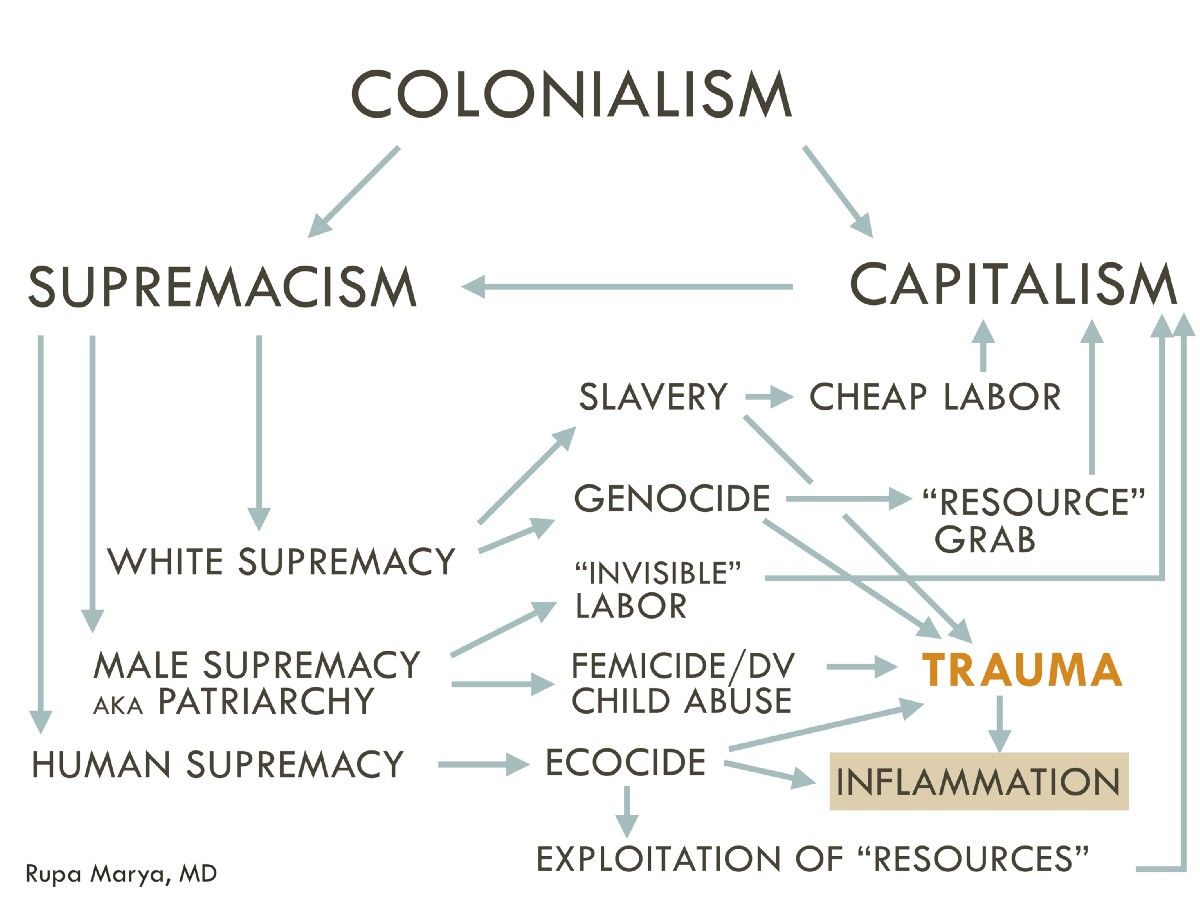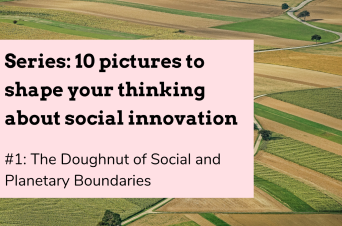
Systems of Oppression
blog | Words Matt Berry | 11 Nov 2022
The next in our 10-part series sharing different pictures that can help us to make sense of the big complex world of social innovation and systems change.
#3: Systems of Oppression

What does it say?
From doctor/artist/activist Rupa Marya, this picture captures a whole matrix of oppression that our work as designers and innovators needs to focus on dismantling and replacing.
Too often we think of each of these ‘isms’ in isolation: there are people campaigning against colonialism over here, writing about anticapitalism over there, and designing against the patriarchy somewhere else again.
But this picture shows just how deeply connected these systems of oppression really are. Historically and today, the land, labour and resources of those at the bottom of supremacist hierarchies is appropriated to fuel capitalist growth and accumulation, while the collateral damage (from intergenerational trauma to ecological devastation) is palmed off as inevitable ‘negative externalities’ to be mitigated after the fact.
How is it being used?
Incredible innovators around the world, especially people of colour with deep lived experience of these systems of oppression, are leading a movement towards design approaches that actively dismantle these systems and replace them with justice and liberation.
To mention just a few: the Design Justice Network has produced a great set of principles for design justice with over 2,500 signatories, Decolonising Design offers powerful critiques and research, Liberatory Design offers (in the form of a picture!) a justice-centred alternative to the double diamond, Trauma-Informed Design recognises oppression and centres the need for healing, and many more individuals and collectives are using their insights into systems of oppression to help design better futures instead.
Why is it important?
Leading design projects that have real impacts on people’s lives can be both exciting and a bit terrifying. There’s a huge responsibility to it – how do we recognise and use the power we hold in our positions?
As a cis, white, male, middle-class, able-bodied person in a high-income country, recognising my privilege is step one – but the next step is to consider how that privilege shapes the focus of my design work. The systems of oppression this picture describes, while they’re dehumanising for everyone at all levels, benefit me and people like me. I need to see that, recognise it, and keep choosing to dismantle and replace these systems in any way I can – not just once, but every day I go to work.
Innovation as a means of mitigating the negative externalities of dysfunctional (and sometimes harm-causing) systems doesn’t get me out of bed in the morning. I think designers have a powerful role to play, in partnership with existing movements, to imagine and build whole new systems, with justice, liberation, and healing at their core. This picture helped me realise that’s the kind of designer I want to be.
Read #4 of this blog series now: The Berkana Institute’s ‘Two Loops’.
Follow Matt Norman on LinkedIn for more insights and ideas about social innovation.
More from this series

The Doughnut of Social and Planetary Boundaries
In this blog series, I want to share 10 different pictures I’ve come across in my work and my studies that have helped me to make sense of the big complex world of social innovation and systems change.
04 Nov 22

The Development Curve
In this 10-part series, we share 10 different pictures that can help us to make sense of the big complex world of social innovation and systems change.
04 Nov 22

The Berkana Institute’s ‘Two Loops’
In this 10-part series, we share 10 different pictures that can help us to make sense of the big complex world of social innovation and systems change
11 Nov 22